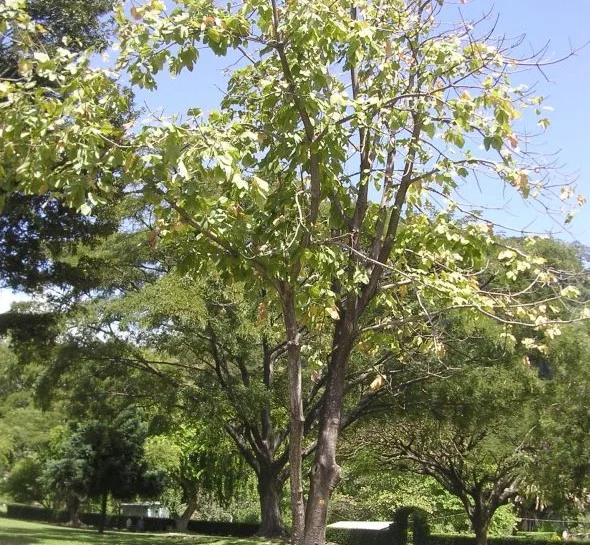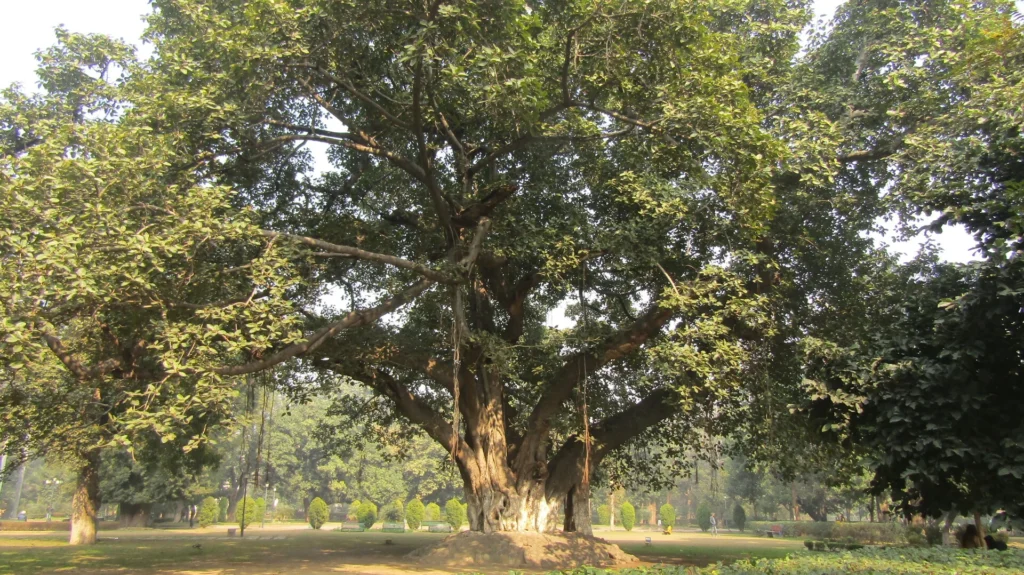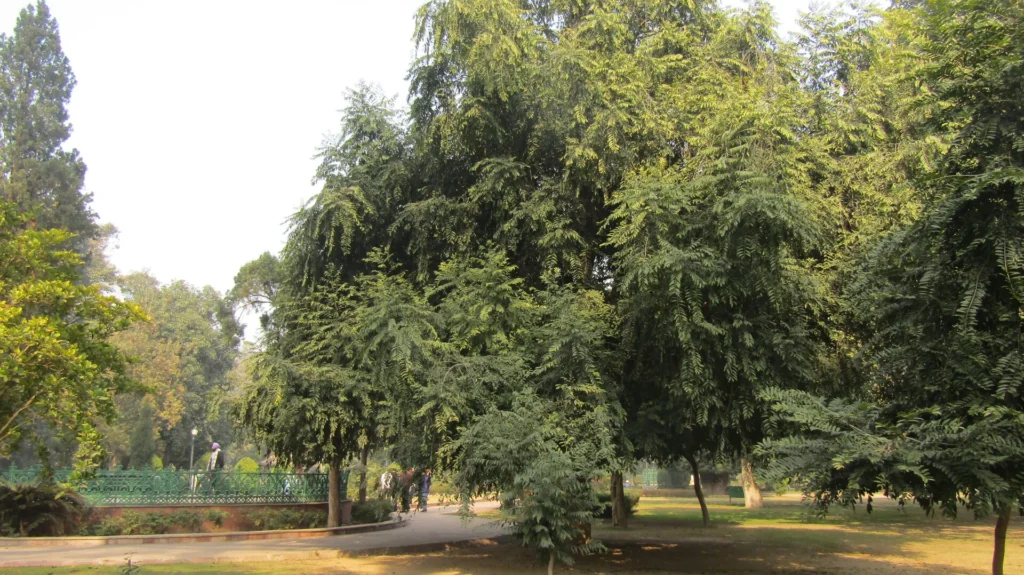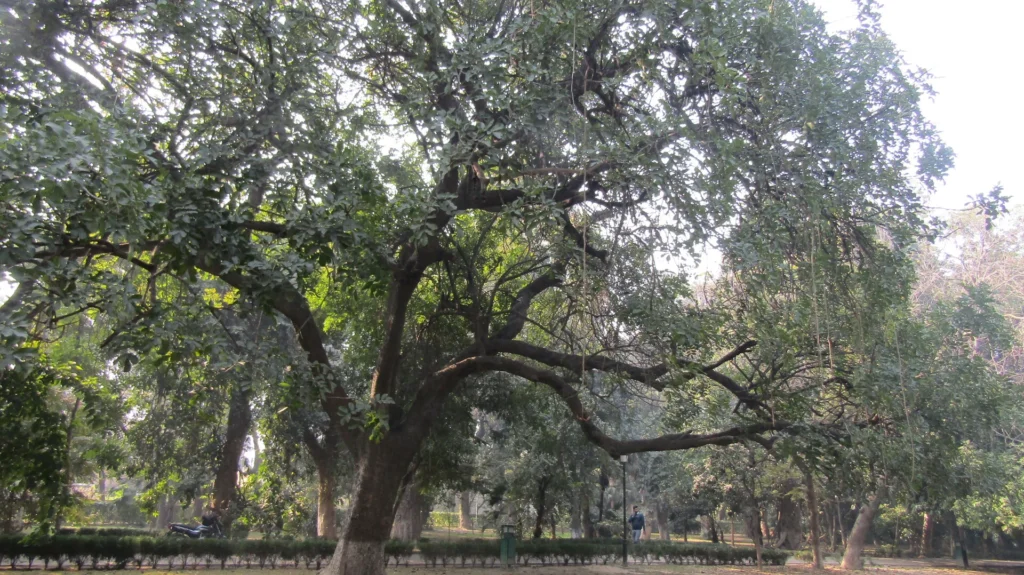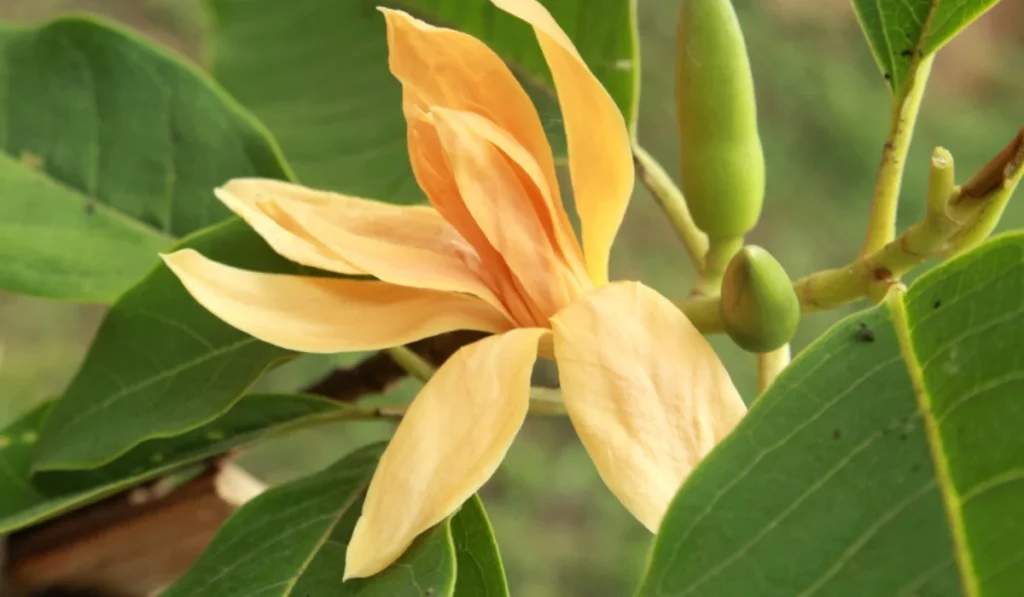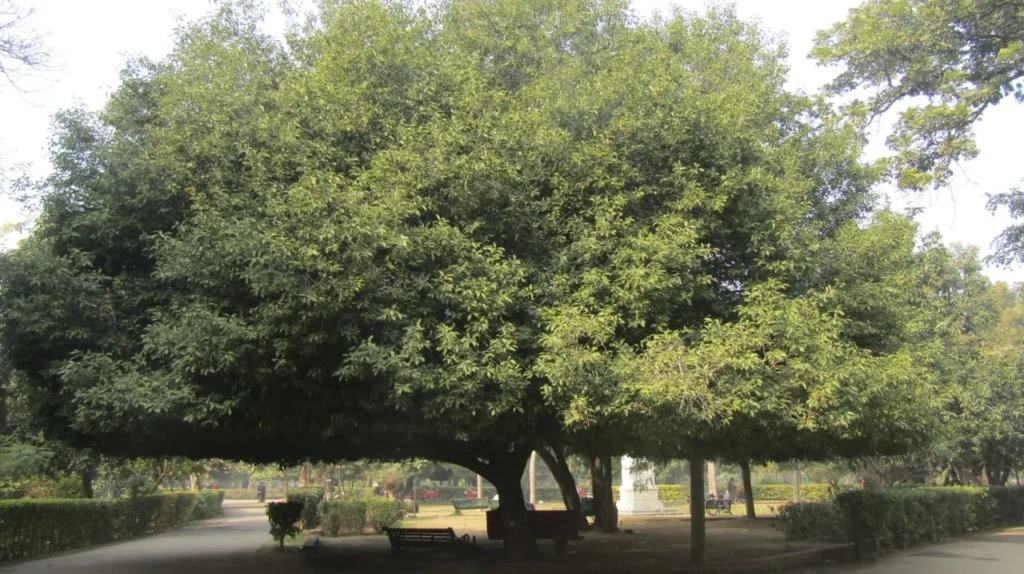Buddha coconut , also called Stericulia alata is a tall tree for its coconut-like fruit. Indigenous to India, this plant is not only valued for its distinctive features but also holds cultural significance.
- Kingdom: Plantae
- Characteristic feature: Tracheophytes
- Type of seed: Angiosperm
- Order: Malvales
- Family: Sterculiaceae
- Genus: Stericulia
- Species: S. alata
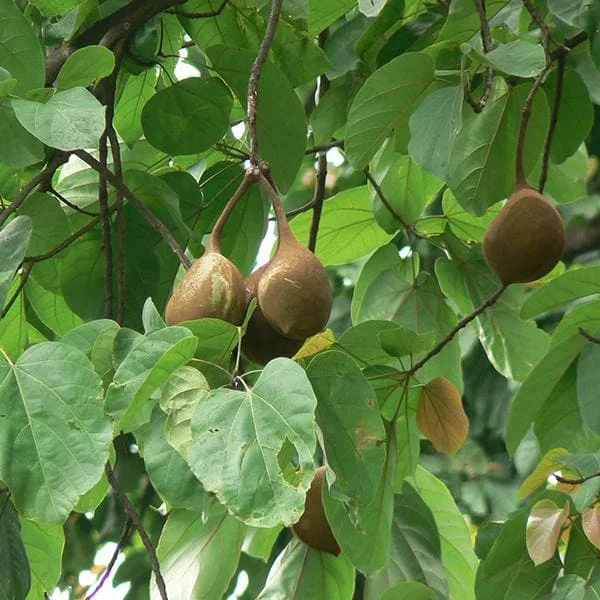
The leaves are borne on 3-10 cm long stalks, densely arranged towards the ends of branches. These leaves are broadly ovate-heart-shaped, measuring 10-25 cm in length and 7-15 cm in width. They have a wavy margin, smooth texture, and pointed or tapering tips.
The tree produces small, few-flowered racemes, with flowers measuring 1-1.5 cm across on 2-3 mm long stalks. Notably, the flowers lack petals, and the sepals (5 in number) are nearly free, linear-lance-shaped, or elliptic. The sepals are fleshy, densely ferruginous pubescent on the outside, sparsely velvet-hairy, and exhibit purple with red streaks within.
In male flowers, the anthers are united into a 1-2 mm broad head on a 4-6 mm long staminal column. In bisexual flowers, sessile anthers are arranged in clusters of 4 or 5 in the sinuses formed by the carpels. The plant has five carpels with sessile ovaries, 2-3 mm long and pubescent. The style is recurved.
The fruit of the Buddha Coconut is described as large and woody, measuring 7-12 cm in diameter and obliquely round. The seeds, about 40 per follicle, are oblong and compressed, arranged in two rows and winged.
Daily Use Case
It is an ornamental tree planted for shade in the gardens and along the roadside. Seeds are edible and are used as a substitute for opium or used for medical purposes. The seeds of buddha coconut can be roasted and can be eaten by human beings.

